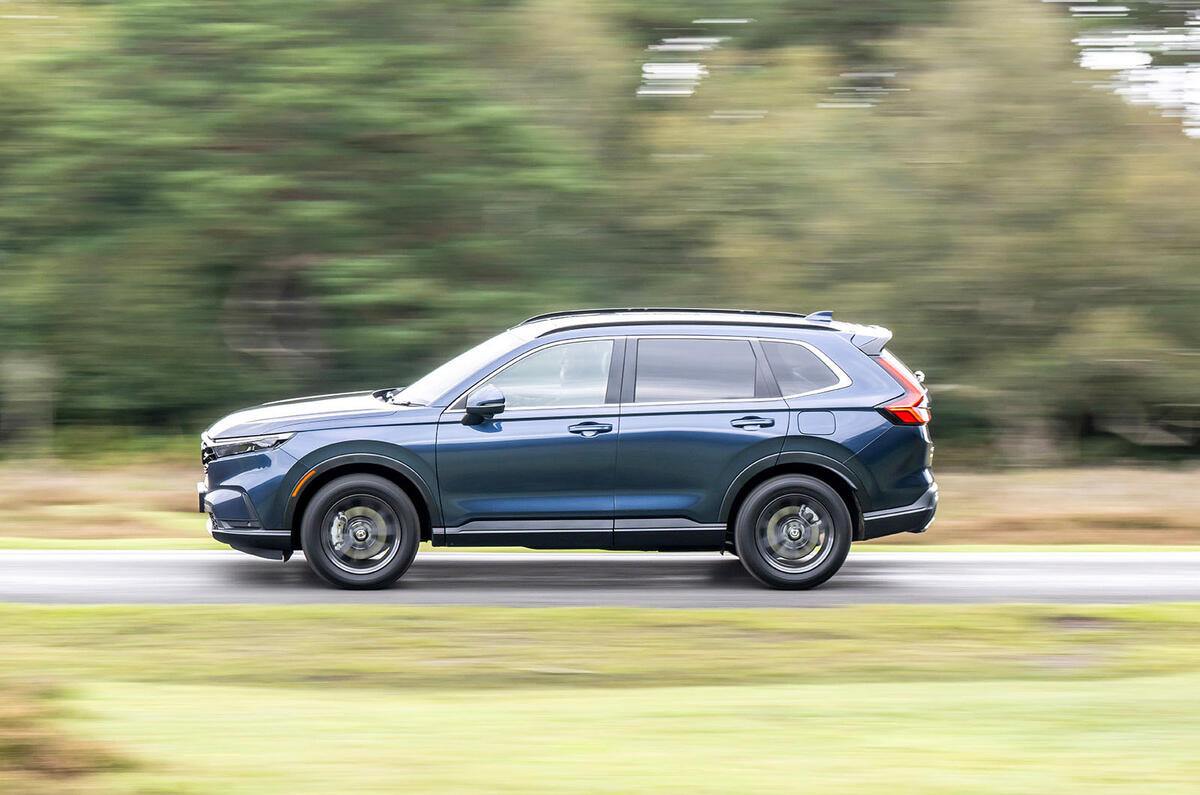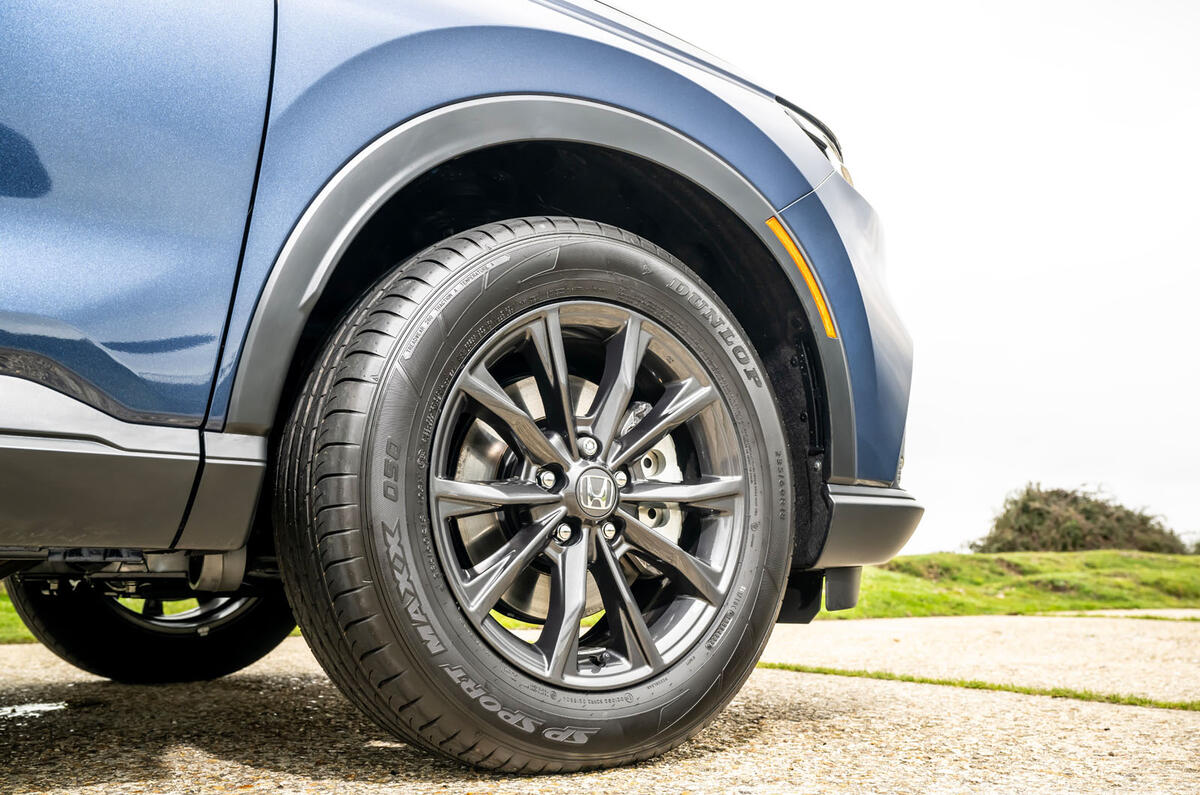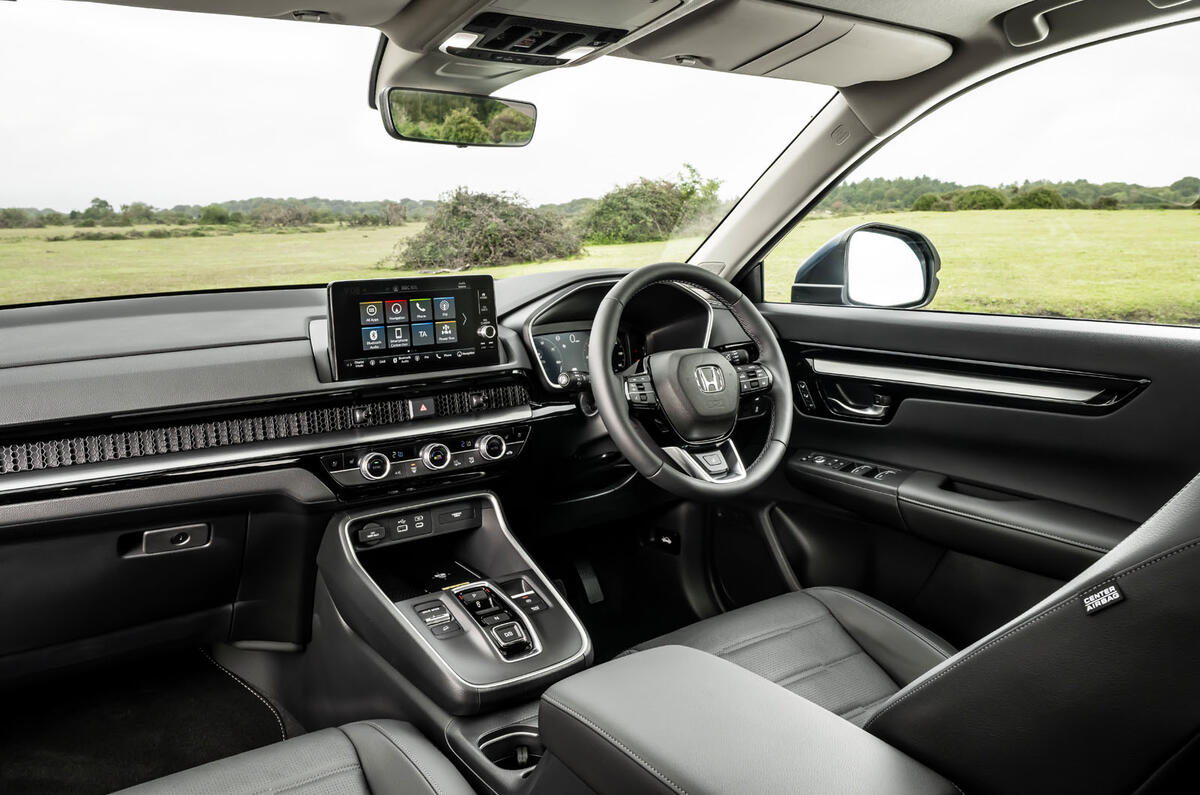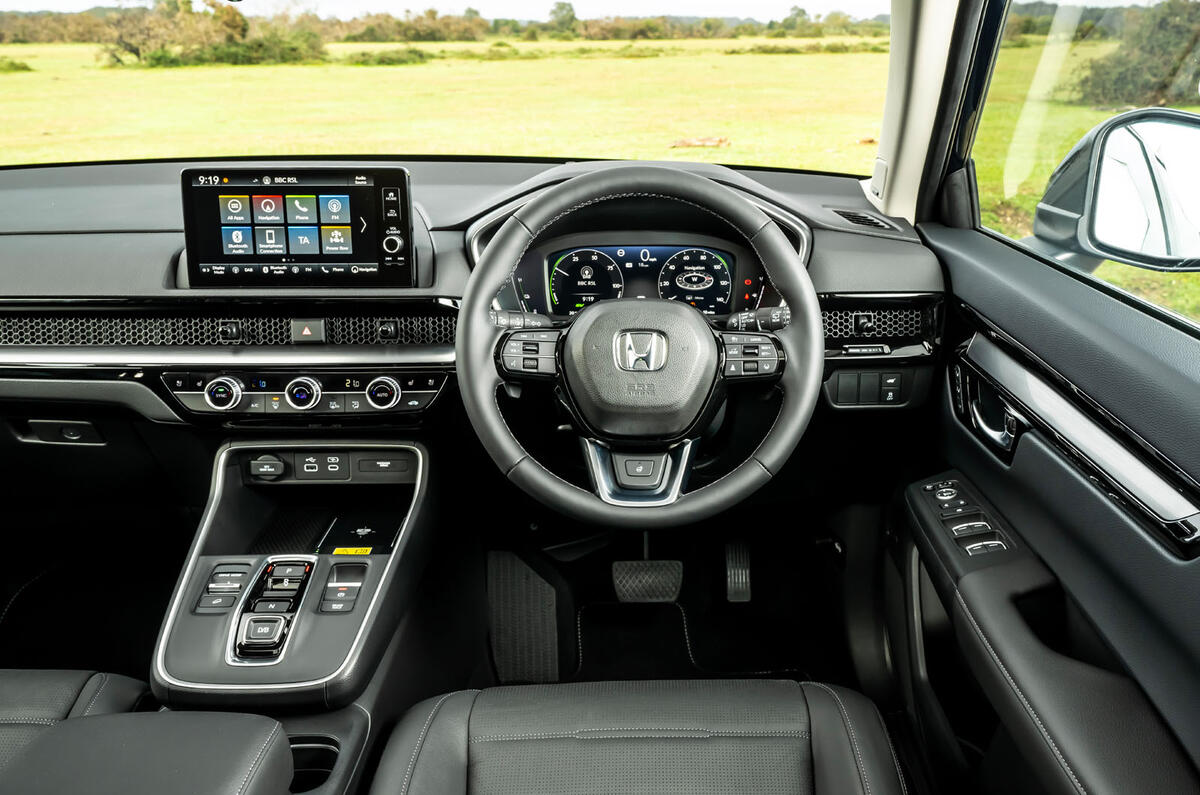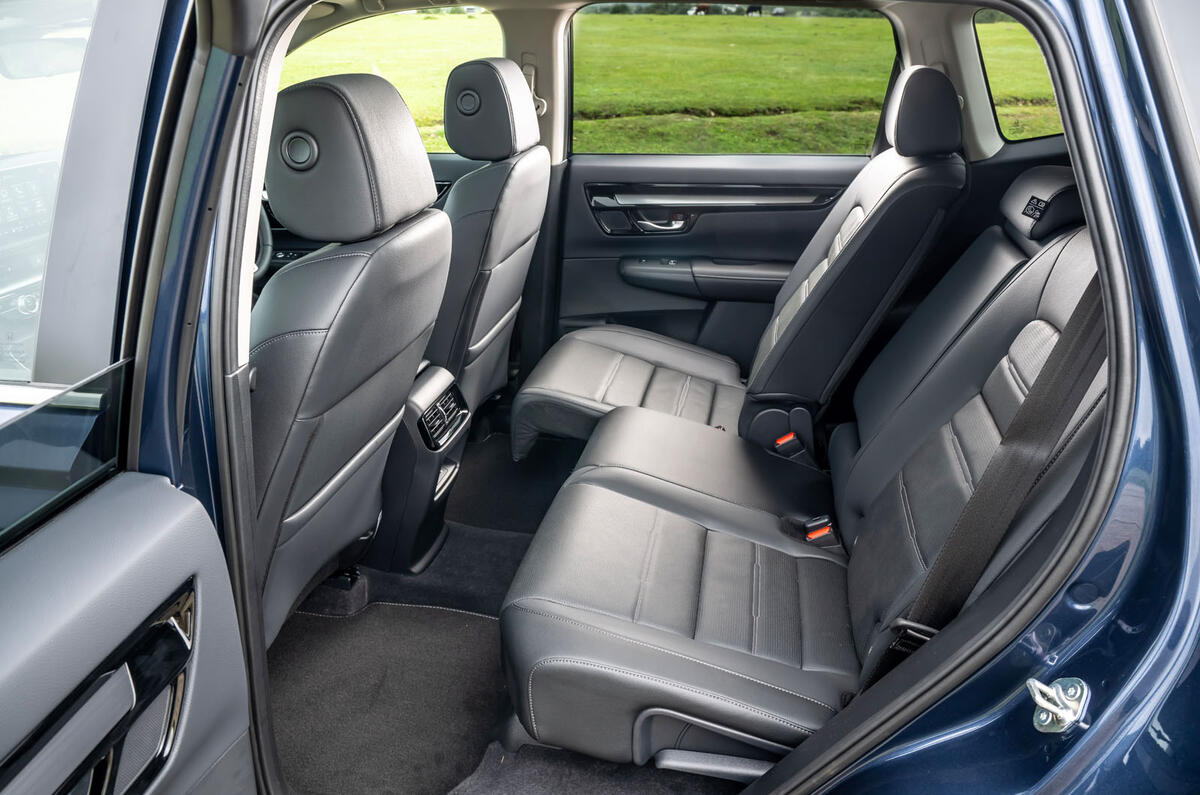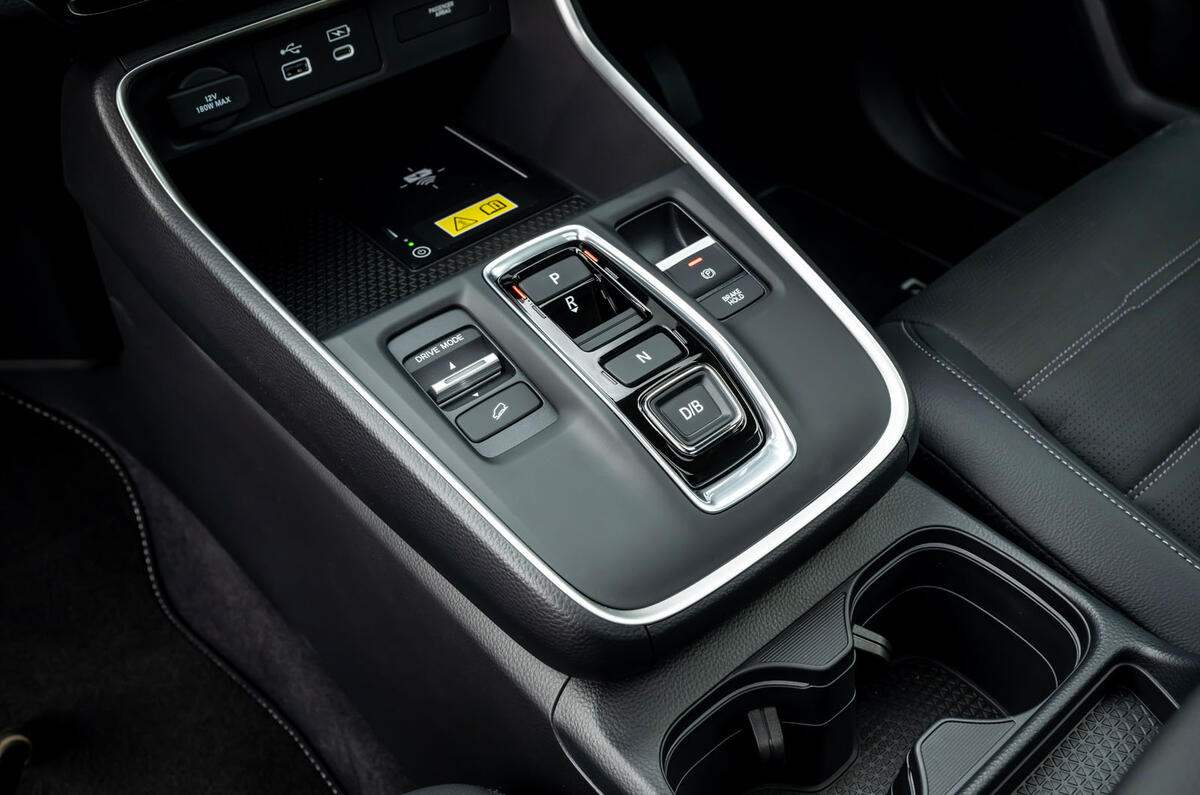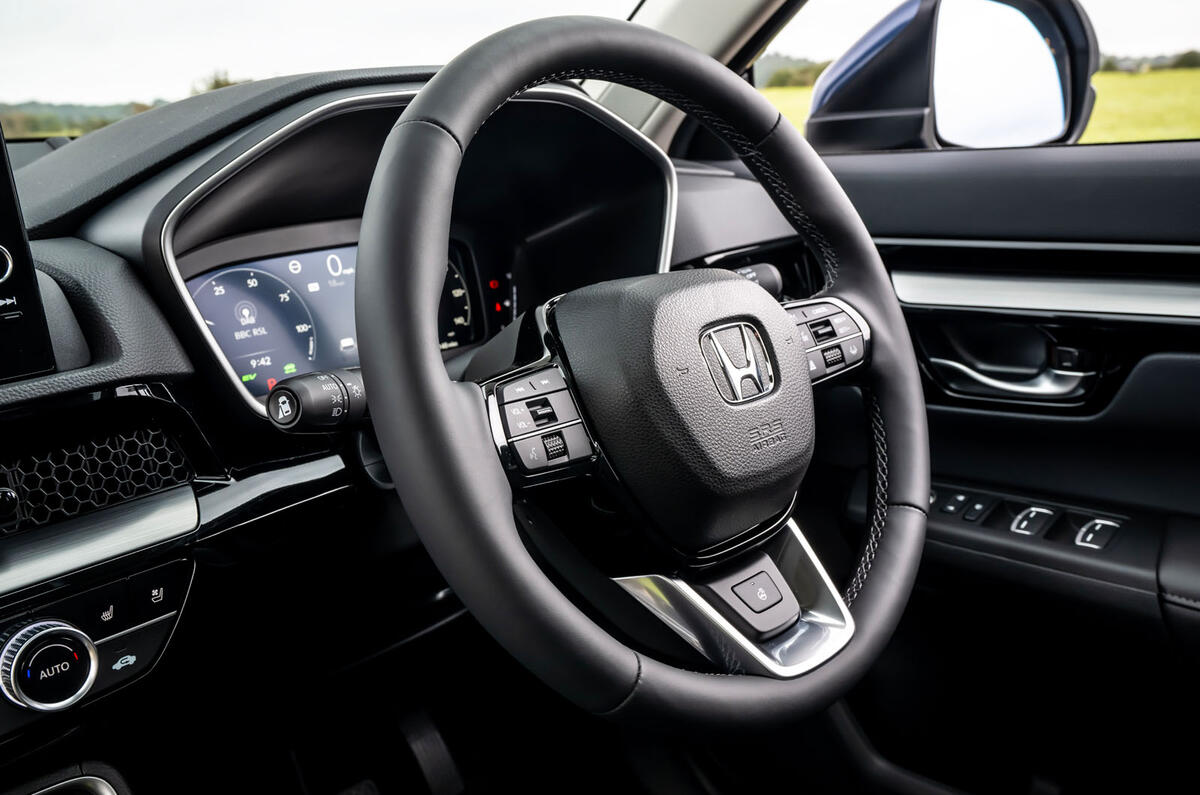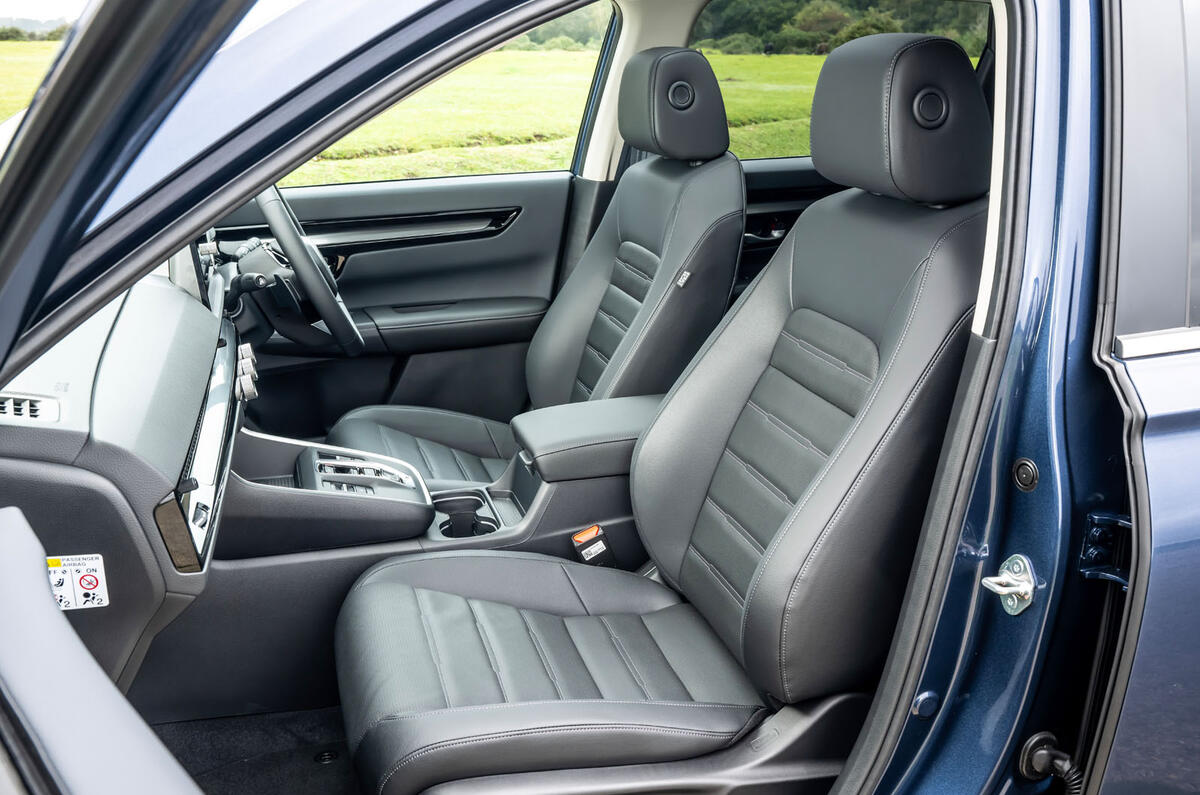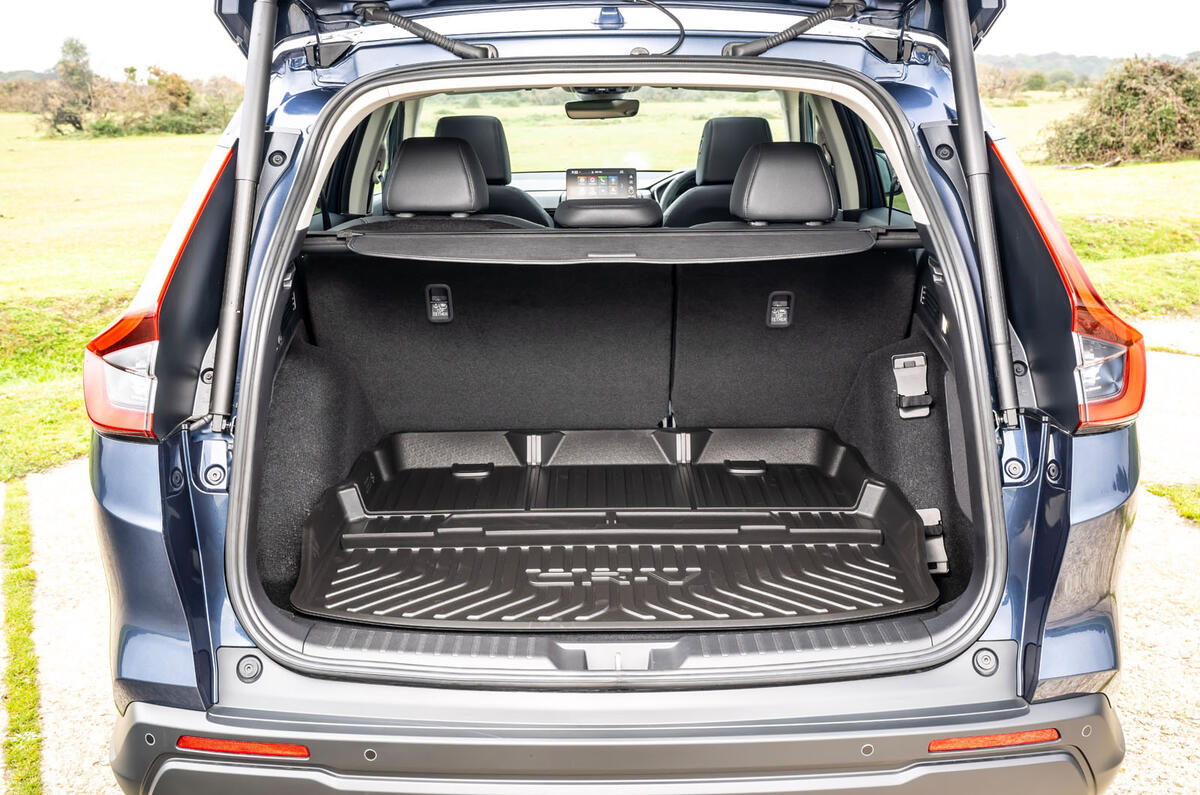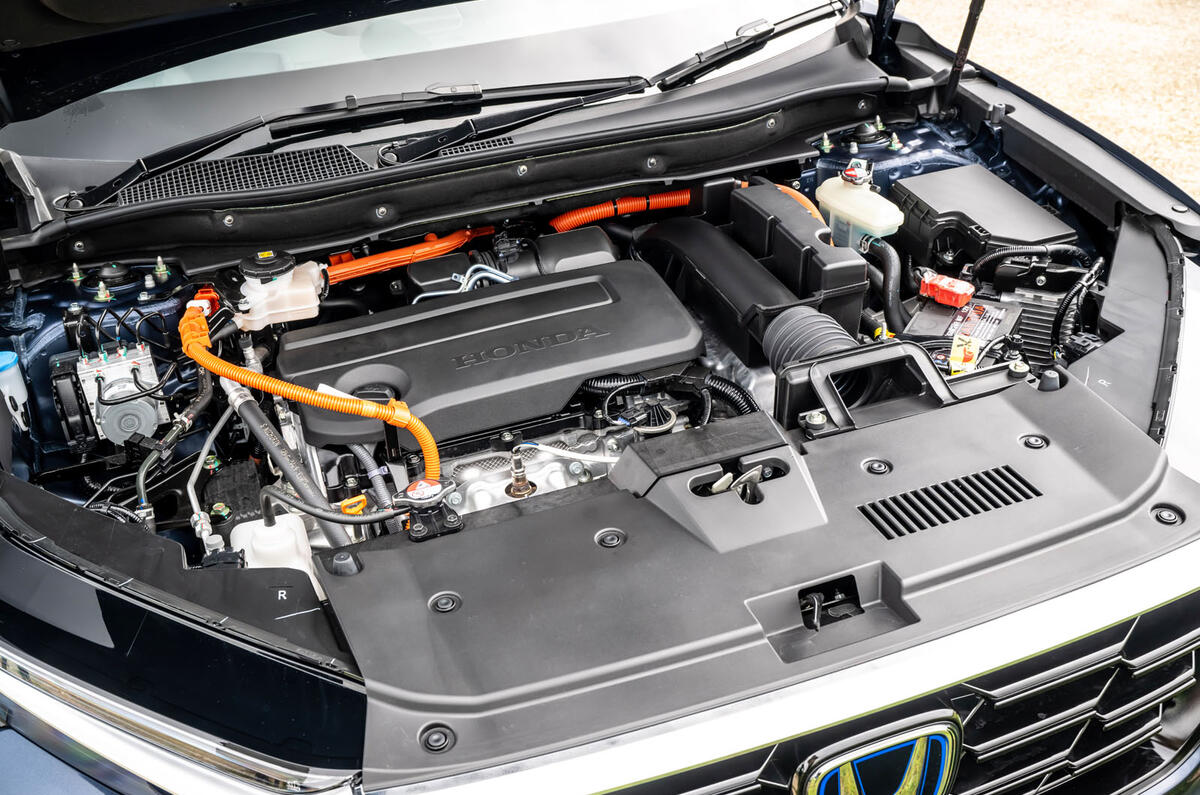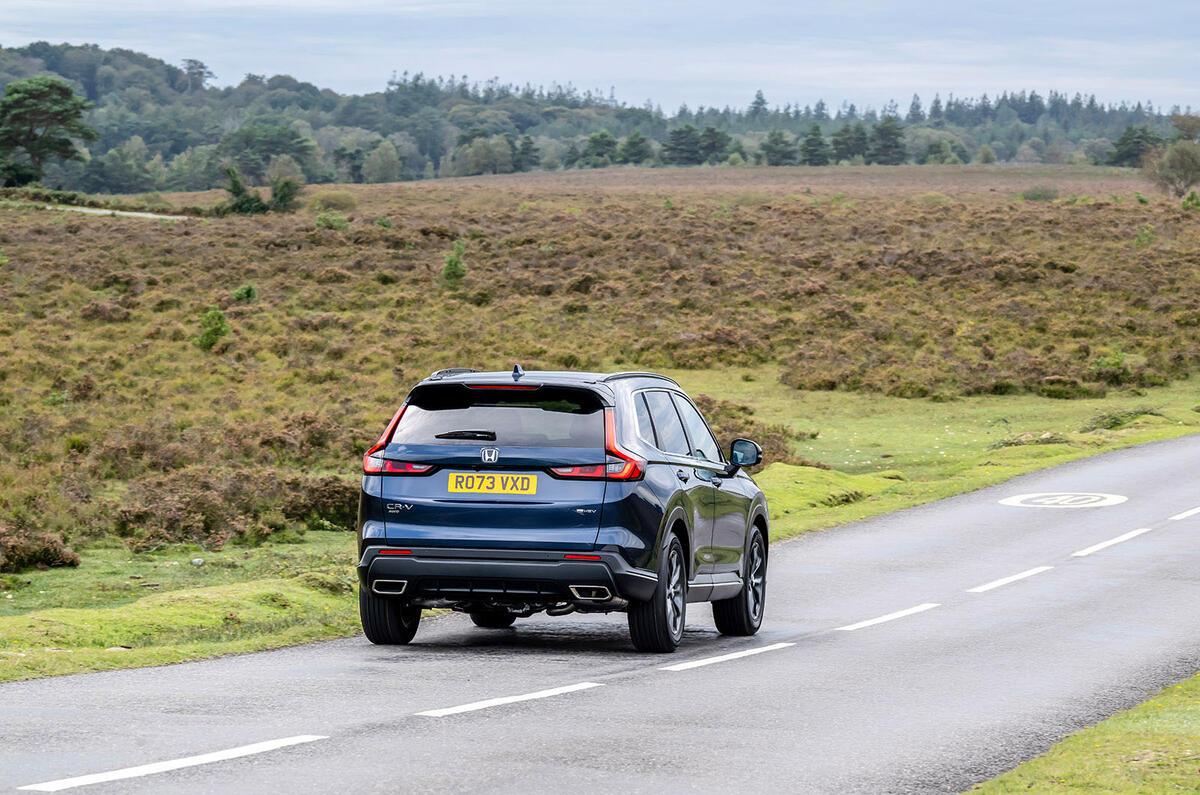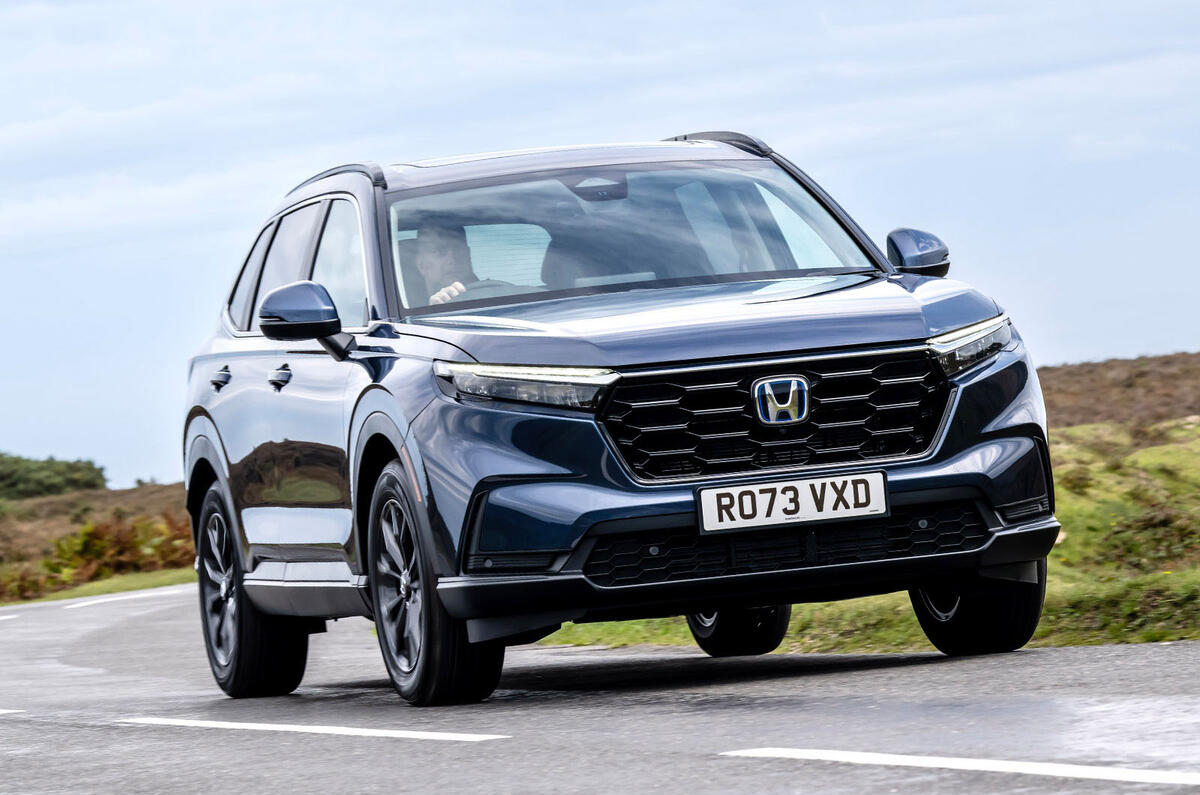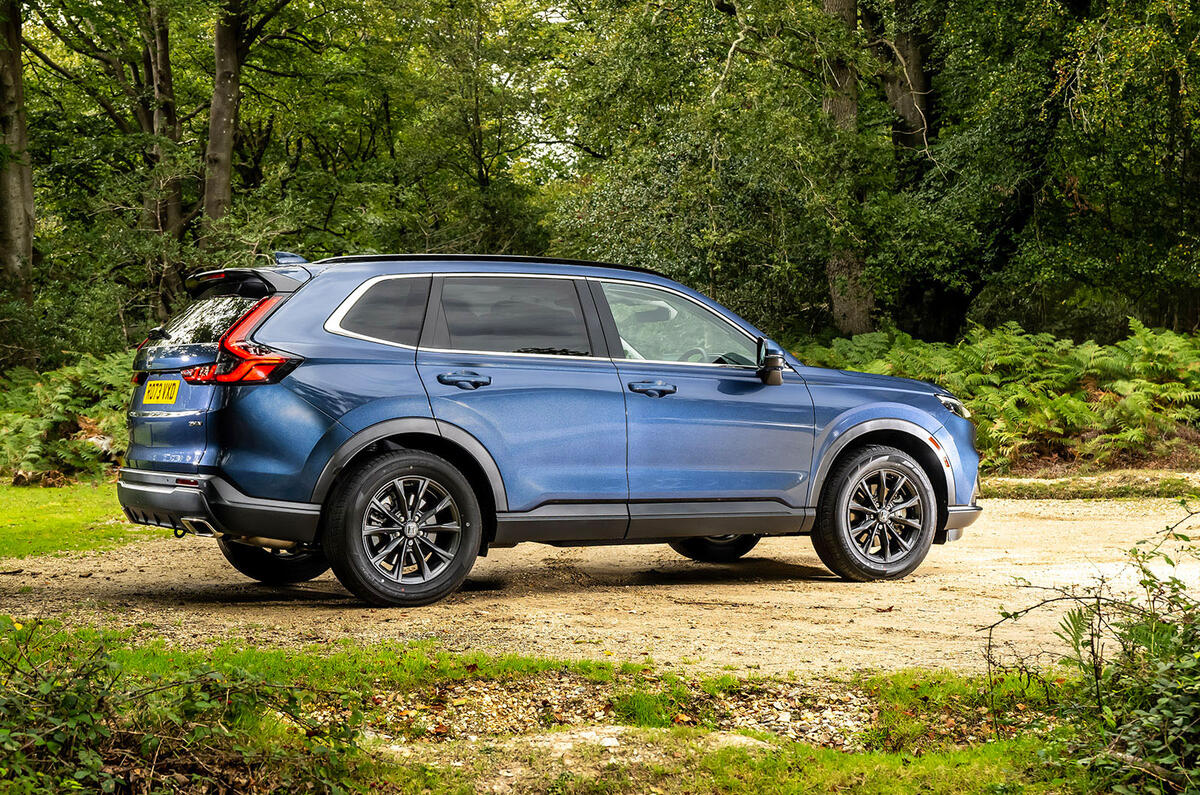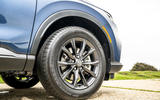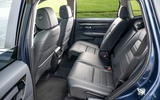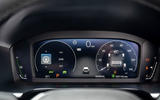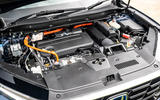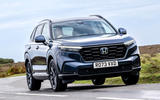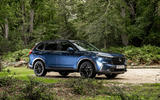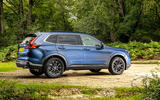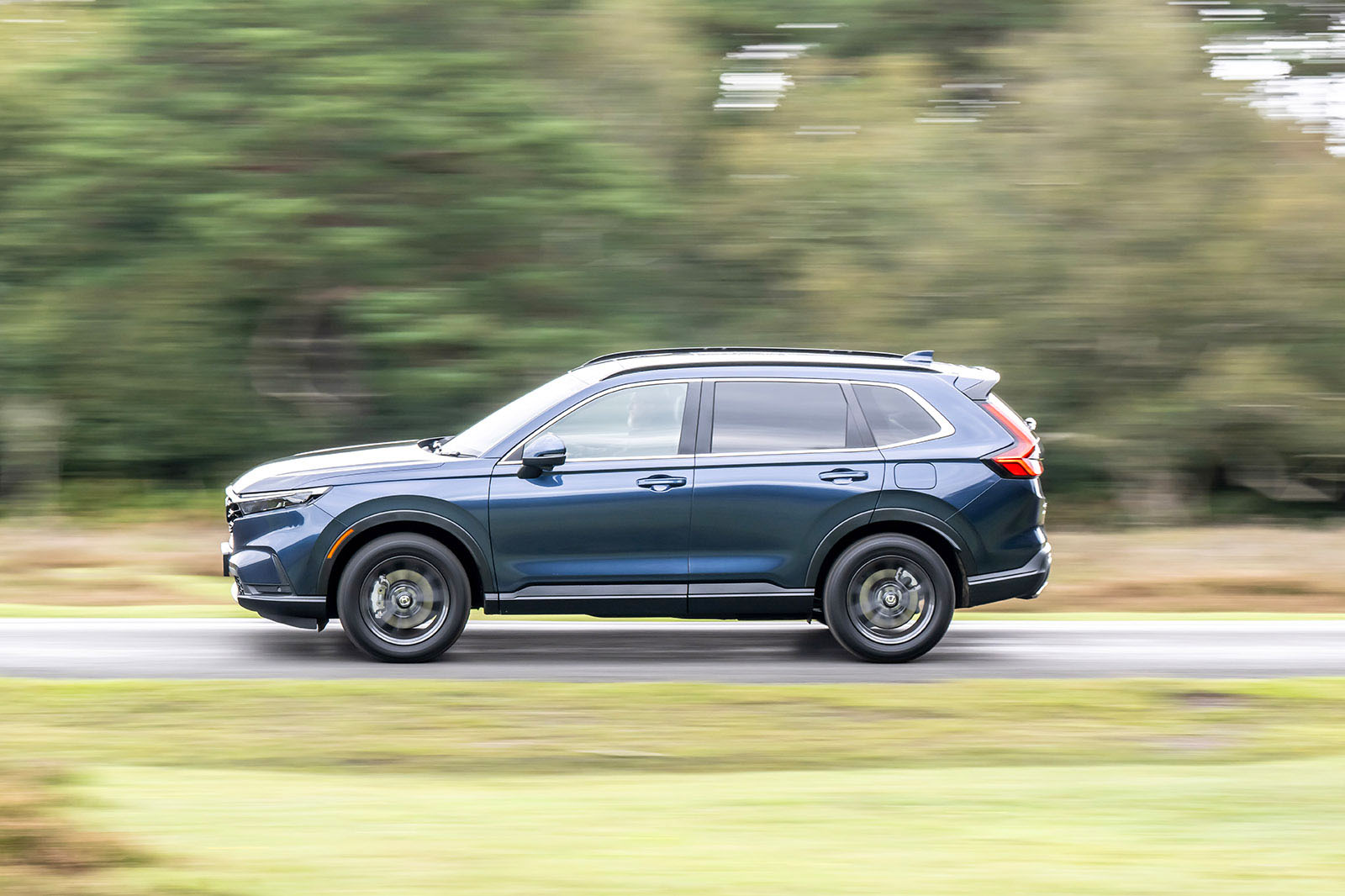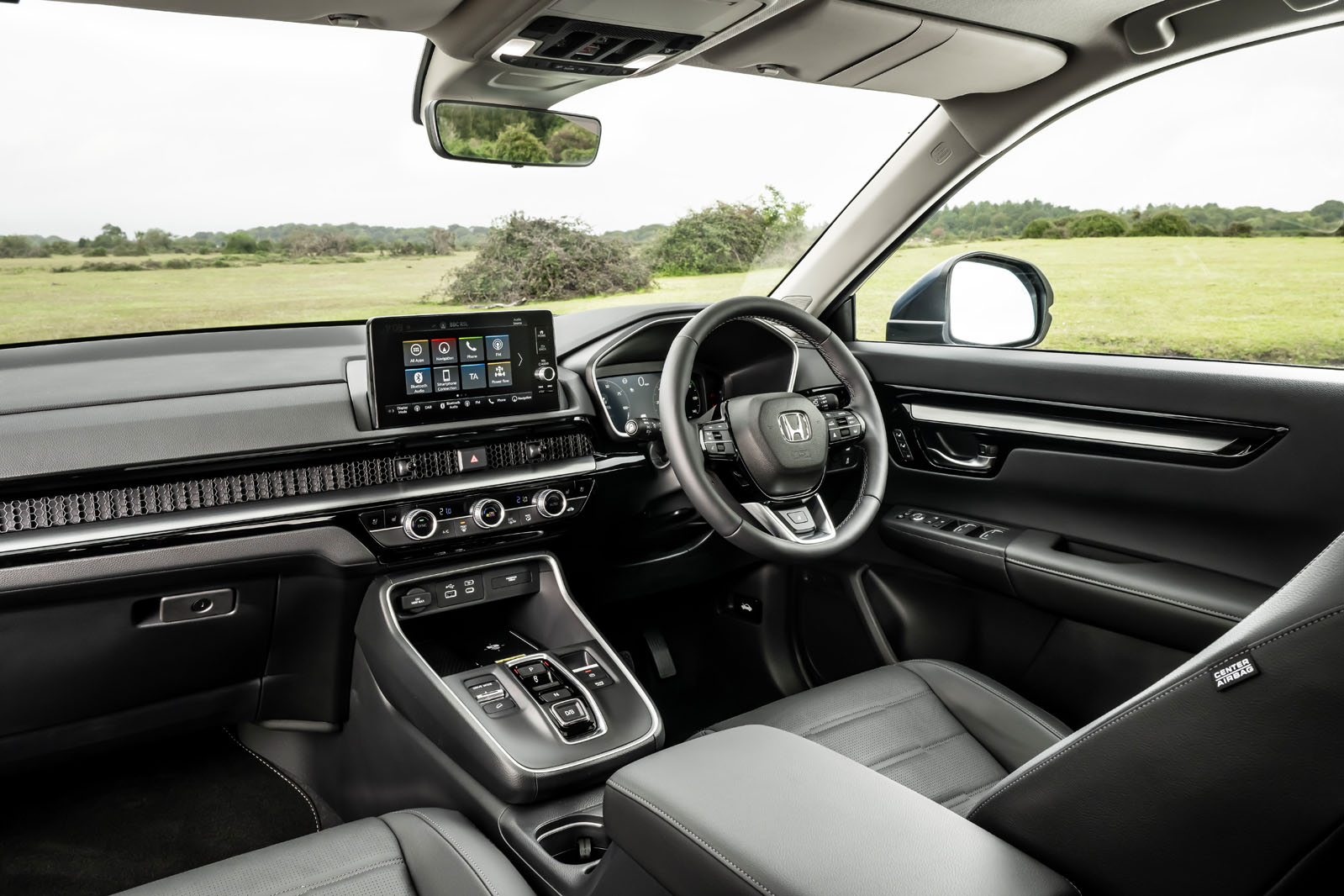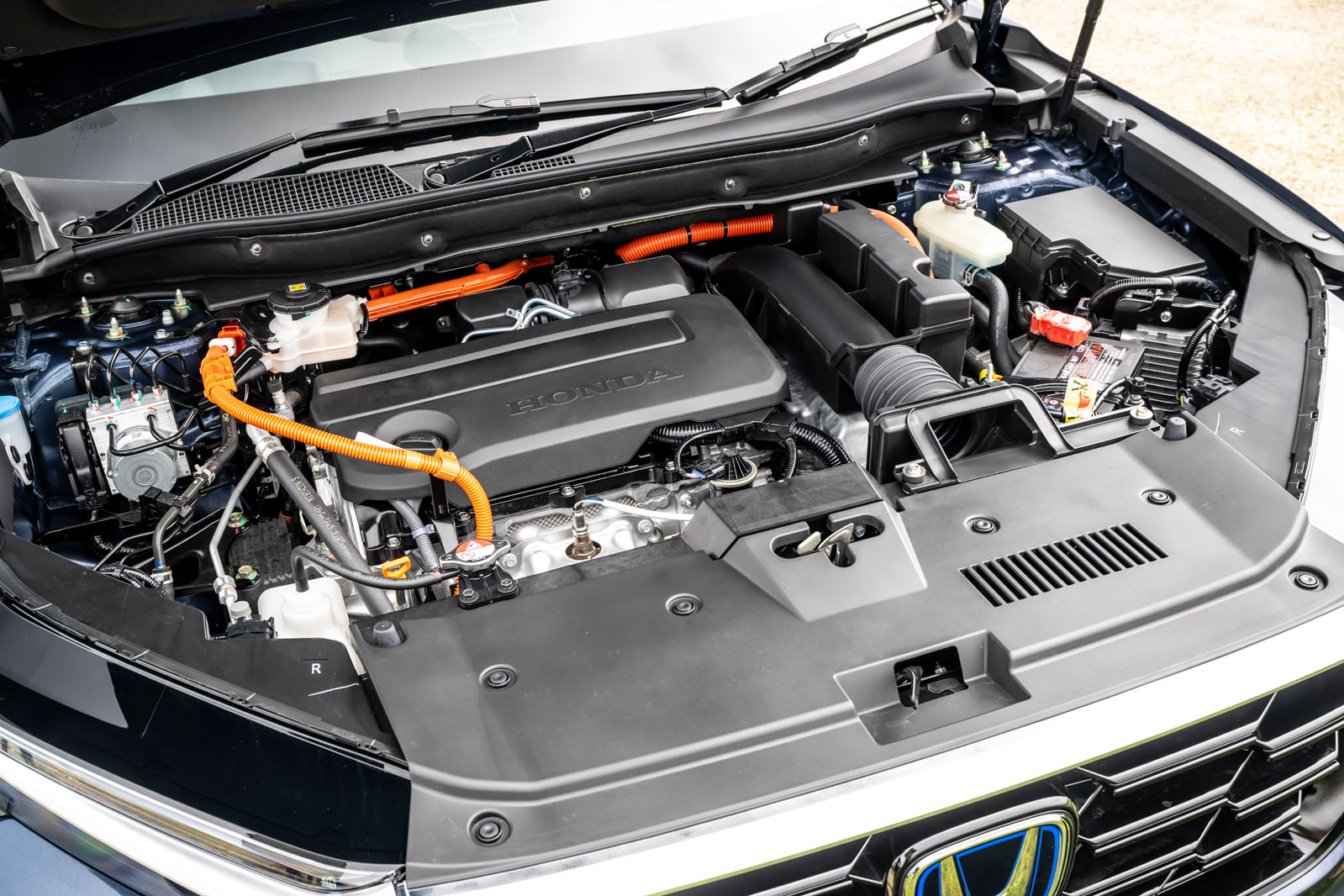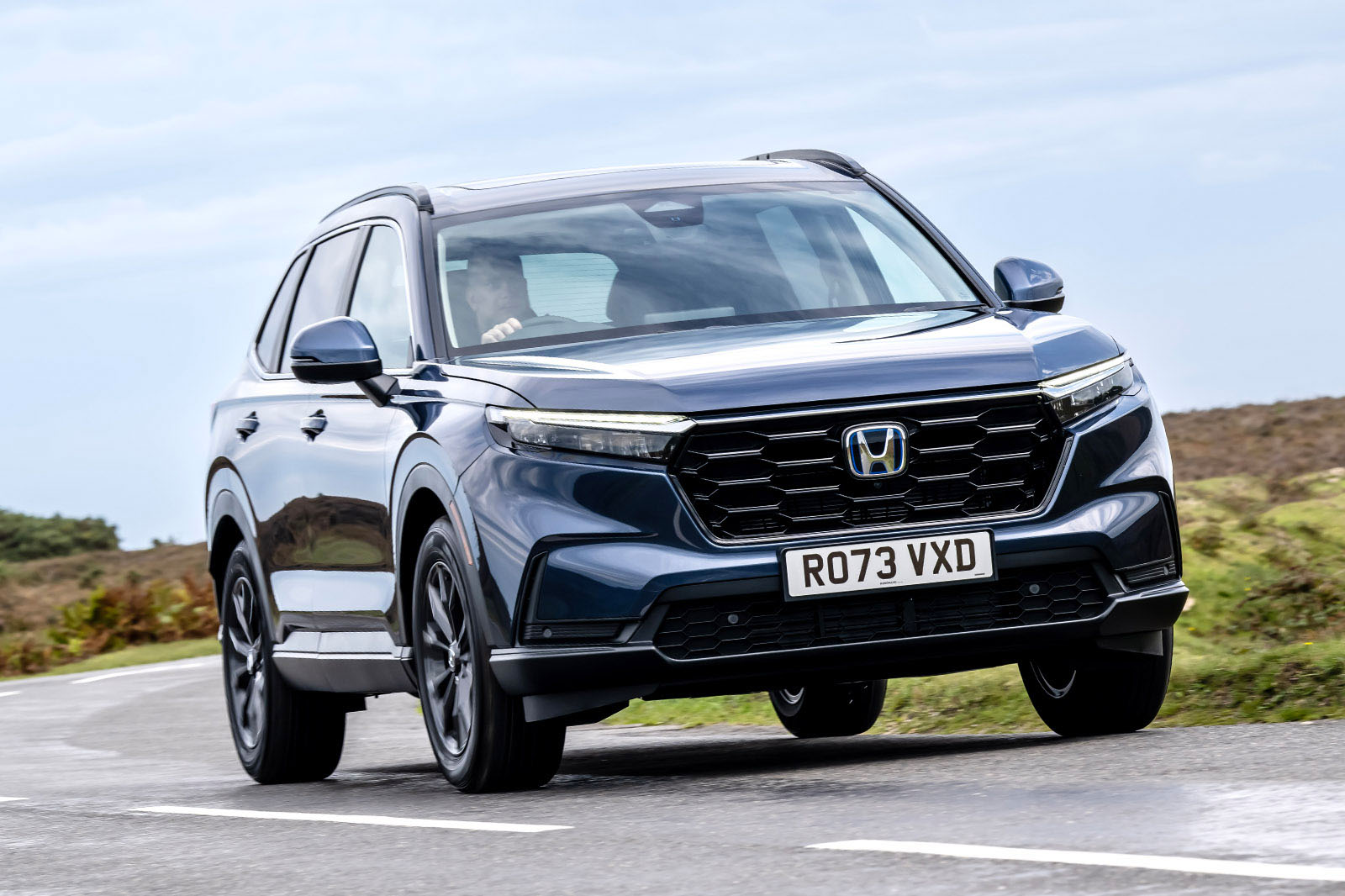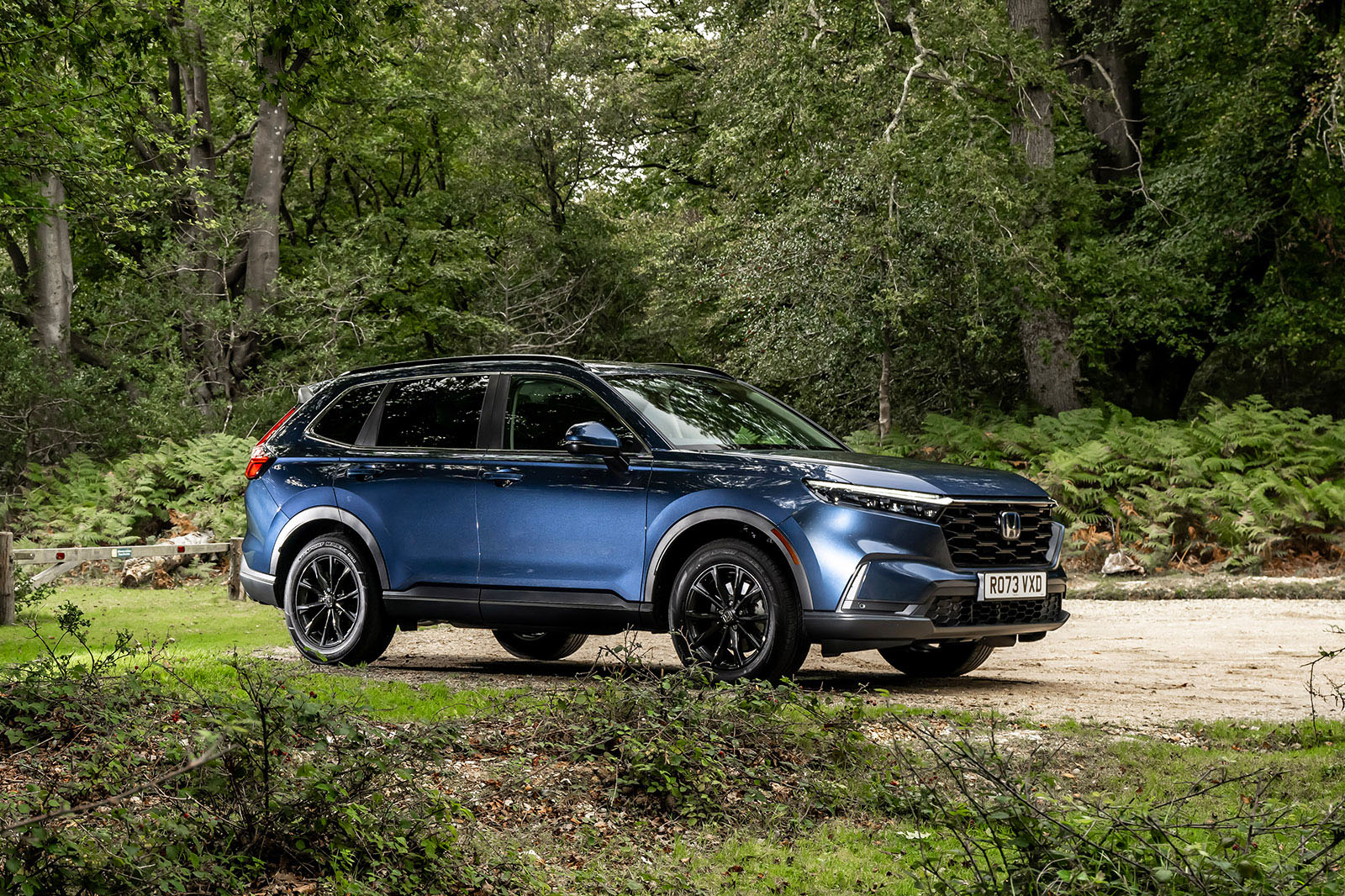Prices for the new CR-V start at £45,895. By comparison, Toyota wants just £38,880 for a RAV4.
Honda UK may be playing a dangerous game here, since it has chosen to only offer two high-grade trim levels on the e:HEV, and to skip the front-wheel drive version entirely. All regular hybrid CR-Vs in the UK will have four-wheel drive. The reason is that most customers of the outgoing CR-V ticked the four-wheel drive version.
But the truth is that, unless you frequent visit muddy fields or snowy mountains, all you’re achieving with four-wheel drive in a road-going family SUV is wasting fuel. Indeed, on our test drive in the four-wheel drive CR-V, the car indicated an unspectacular 43.5mpg.
We’re sure Honda has done the maths, but with no unhybridized versions, standard four-wheel drive and no entry-level trims, it leaves people who are looking for a slightly more affordable family SUV out in the cold.
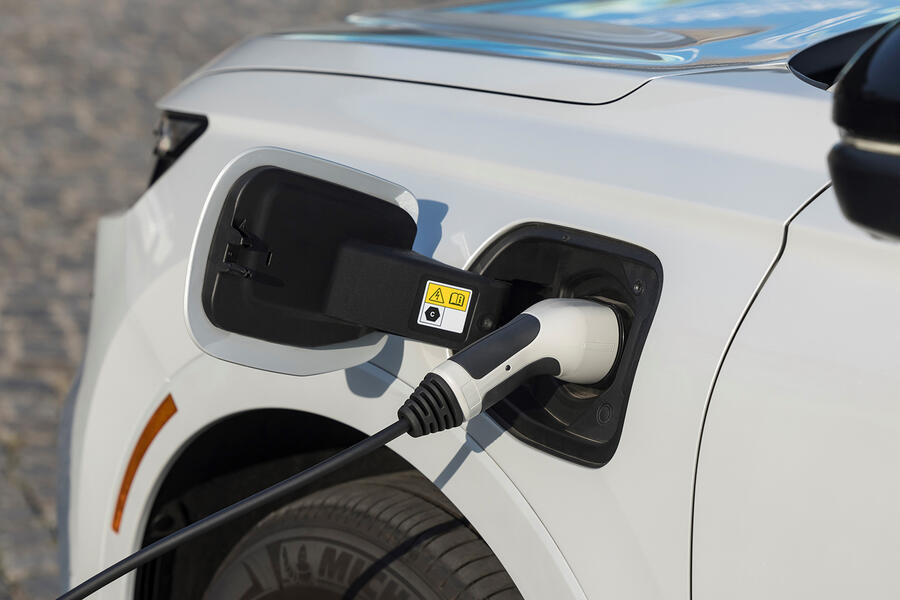
Relatively speaking, things look better on the PHEV side, which only comes in one trim level and exclusively drives its front wheels. Its fuel consumption will of course be heavily dependent on how much you charge it. More relevant is its electric range, which is quoted as 50 miles, comfortably putting it in the 8% BIK bracket.
We had a limited amount of time with the car so couldn’t run the battery dry for a proper range test, but with a full battery, it predicted 41 miles of electric-only, real-world range. When driven in Save mode, which is equivalent to running with an empty battery, it returned an indicated 49mpg and still felt powerful enough.
The e:PHEV costs £53,995. That’s about midway between the Hyundai Santa Fe PHEV and Kia Sorento PHEV, although their shorter electric-only ranges mean they incur more BIK tax. The equivalent Toyota RAV4 PHEV is a little cheaper, while anything with a vaguely premium badge will be significantly dearer.


